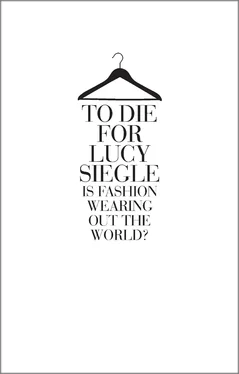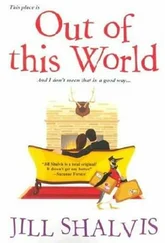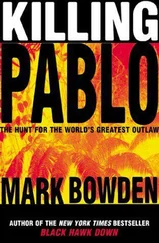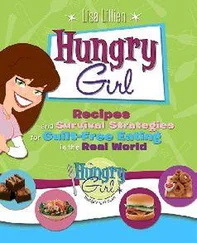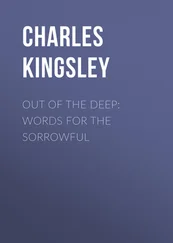My fear is this: unless we as fashion-lovers and consumers assert ourselves, the industry will take the path of least resistance. The combination of the global recession and the inevitable price rises of majoringredients of the fashion supply chain, such as oil and cotton, will see the big players, the multinational brands and the giant retailers that control the UK high street, become even more ruthless in grabbing their margin. The victims will be the producers, the garment workers, and eventually you and me, as design and quality are sacrificed. I don’t want that to happen.
It is a battle: our weakness has become their stock in trade. Meanwhile, their enemy is the intelligent fashion consumer who asks the right questions and buys more carefully. This book is intended to guide you towards becoming that consumer. It takes you beyond the swing tickets and into the heart of contemporary garment production to reveal the truth about materials, production, and the wardrobe lives of our clothes. It also acknowledges the good as well as the bad, and aims to help you forge a fashion future that matches your aesthetic to your ethics. Ultimately, the intention is to reconnect you with the passion and excitement that turned you into a fashion-lover in the first place.
Lucy Siegle, April 2011
Chapter 1
Fat Wardrobes and Shrinking Style
How my Fashion Sense and Yours has Lost the Plot
This is not my ‘beautiful’ wardrobe. Every morning when I wake up I am directly confronted by my fashion history. Mistakes, corrections, good buys, bad buys, comfort buys, drunk buys: they refuse to go away. This is because my ‘primary’ wardrobe – as distinct from the other two wardrobes I’ve had to take over in the past ten years to accommodate the growing volume of my clothing collection – is opposite my bed, and the door, like a broken zipper, will no longer pull across to hide the tale of excess. If I squint I can even make out a rather nasty polyester pinafore mini-dress I used to wear in the early 1990s.
Having failed to embrace at least one fashion – the consumerist purchase-and-purge churn of the day – because I’m a bit of a hoarder, you might expect me to be more upbeat about my large collection of clothes. You could argue that my curatorial instincts should have left me with a style treasure trove that I could one day hand on to another generation of fashion lovers. Sadly, it hasn’t worked out like that. In the cold light of day many of the micro trends I’ve ‘invested in’ – T-shirts with chains, a one-shouldered jump suit, and other designer lookalike items – merge to form a type of sartorial wasteland. However, it is true that my wardrobes (plural) also represent a sort of time capsule: evidence of a revolution in fashion that has changed the way we view and wear clothes forever. They have catalogued the defining macro trends of our generation, and so have a preserved-in-aspic quality about them.
My collection is testament to the extraordinary way we now consume clothes.
The fact that I tend to hang on to many of my clothes might be atypical, but the type, volume and variety in the depths of my cupboards are predictable. Despite the fact that I’ve spent many years greening up the rest of my life, not to mention urging readers of my newspaper column to try to do the same, for a long time my wardrobe represented a bit of a black hole. I made a few attempts to buy with a keener eye on the ecological fallout – prioritising sustainable fibres, alternative designers and labels that prioritise low environmental footprint or social-justice concepts such as Fairtrade. But I was noticeably still consuming. In fact, I couldn’t quite get the hang of not consuming. The truth was, although I might have been more ‘green’ than most, in that I began to limit my patronage of certain retailers, I was still buying furiously, placing me in a demographic whose spending was increasingly out-of-control. And I don’t have to come around to your house and have a look to make a good guess at what you’ve got in your cupboards, because over the last decade and a half not only have we bought more at increasing speed, but our tastes have become increasingly homogenised.
If your clothing journey follows not only fashion trends but consumer trends, you’ll find you have only a small amount of formal wear and a similarly small amount of office wear compared to a decade ago; the whole world appears to have embarked on a permanent Dress Down Friday. Instead, you’ll have hangers and shelves and drawers full of home and leisurewear, and there’s likely to be evidence that you’ve bought into some strange new apparel categories such as luxe loungewear (a kind of daywear/pyjama hybrid made from a similarly hybrid fabric such as a cashmere blend). The most ubiquitous item is likely to be the T-shirt, along with its close relation the skinny-ribbed vest. You’ll also probably find that you’ve accumulated a number of dresses in the last five years, as we’ve indulged an obsession with ever more feminine ‘flirty’ dresses. You’ll have more knickers and bras than women at any other time in history. And thanks to the ubiquity of stretch lace and other fancy textile mixes, not only will they be more numerous, but prettier and more sophisticated, now that we’ve moved on from the tyranny of the thong, more embellished and better adapted to the art of seduction than ever before. The UK market in intimate apparel (the distinctly unsexy trade name for lingerie) had stretched to an amazing £2.8 billion 1by 2009, which meant that it had grown by 16.1 per cent. For reasons that will become obvious, I’m sticking primarily to women’s fashion in these pages, but I will say that if you’re male, or have any boys in your family, you’ll have found that sportswear will have had a ‘profound influence’ on their wardrobe. You yourself will almost certainly have more pairs of jeans than you’d ever have thought necessary to own in a lifetime. By 2006 Europe was consuming 391 million pairs of jeans 2every year. (On this small island we really went for it: in 2007 an incredible three pairs 3were being sold every second.) I can count nineteen pairs in my wardrobe, of which only four are in what I’d term active service.
You now demand roughly four times 4the number of clothes you would have in 1980. You will spend at least £625 5a year on clothes – but remember that’s just the average. And you are getting a lot of bang for your buck (or clothes for your pound). In one year you’ll accumulate in the region of twenty-eight kilograms 6of clothing (again, this is the average) – adding up to an estimated 1.72 million tonnes 7of brand-new fashion being consumed on an annual basis in the UK. But the really arresting thing is – and I’ll keep coming back to this – that almost the same quantity 8of fashion that you buy you will end up dumping prematurely in the rubbish bin.
Despite your fat wardrobes and hard-to-shut drawers, philosophically speaking you won’t be very happy with what you’ve got. In the way that I think of the shiny leggings (two pairs) that I bought in an effort to emulate the 2009–10 winter season trend, you will often come across pieces in your own cupboards that make you think, ‘What on earth possessed me [to buy that]?’ We have more clothes than at any other time in history, but have become less and less fulfilled and secure in our purchases, precisely because we have become such passive consumers. We watch, we follow, we pick off the rail – herdlike – and we find ourselves at the cash till.
In moments of clarity I wonder, what am I actually holding on to? If I was being generous, I would say that twenty years of investing in high-street fashion has resulted in a mixed bag. If I was being ungenerous, I’d say it was a shambolic ragbag. There’s certainly a jumble of materials – man-made fibres jostle for space with cotton, and a bit of wool. There’s a similar confusion of styles and ideas. Clearly I’ve invested time, money and emotion in my wardrobe, but after two decades avidly consuming fashion, do I have anything to show for it? I’m sorry to say that the real worth of my wardrobe is probably negligible. To put it bluntly, many garments in my possession are destined for landfill rather than posterity.
Читать дальше
